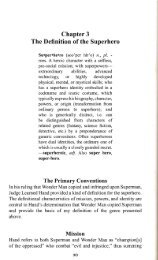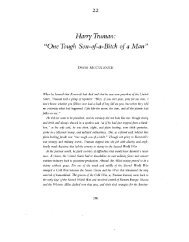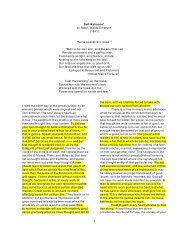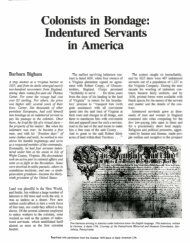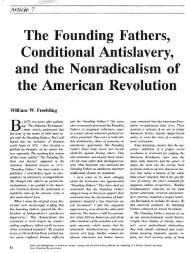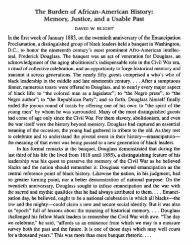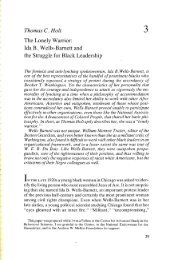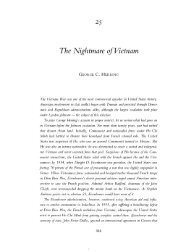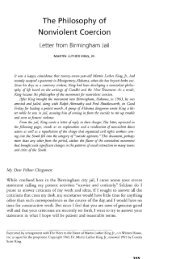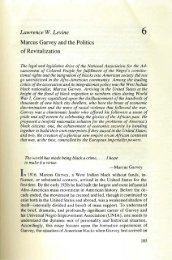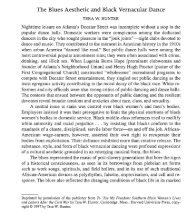Mary - Journeytohistory
Mary - Journeytohistory
Mary - Journeytohistory
Create successful ePaper yourself
Turn your PDF publications into a flip-book with our unique Google optimized e-Paper software.
280 From Slavery to Freedomwas effective. Even where there were no riots, whites kept blacks from the pollsby terrorism and thus ensured victory for the Democratic party. After the offiDcmocrntic pnrty"s cial dissolution of the Ku Klux Klan in 1869, other methods ofefforts to prevcnt intimidation were employed to render blacks politically inconblael's·political sequential. Indeed, intimidation was most effective after 1870,viability although the Ku Klux Klan disclaimed all responsibility becauseof the increasing violence. The crops of blacks were destroyed, theirbarns and houses burned, and they were whipped and lynched for voting Republican.Organized whites became bolder as they patrolled polling places toguarantee "fair, peaceful, and Democratic" elections.Not all blacks were passive in the face of this reign of terror. Even after beatingsand other forms of intimidation, some defied their attackers, vowing tovote whatever the cost. In Bennettsville, South Carolina, blacks armed themselvesand patrolled the streets of the city, defying Klansmen to come for them.And in Alabama, according to one observer, African Americans in one part ofthe state's black belt "invited a contest, saying they were willing to go out intoan open field and 'fight it out.''' Such challenges, however, were exceptions, becausemost African Americans judged that organized, extralegal self-defense ontheir part only invited annihilation. More and more blacks remained at home,and political power changed from Republican to Democratic hands.Disclosures of corruption in Republican governments served to hasten theoverthrow of Radical Reconstruction. The case for Democrats was strengthenedconsiderahly as they pointed to misgovernment through bribery, embezzlement,misappropriation of funds, and other corrupt practices. The federalgovernment was unable to rush to the defense of Southern Republican governmentsbecause it was haVing difficulty purging itself of corruption. It did notmatter that white Southerners had also been corrupt before the war or that theprOVisional governments under Johnson were extravagant andCorruption incorrupt. The Democrats were not in power in 1874 and conseRcpublicangovernlnents quently had all the advantages that the "outs" usually enjoy insuch cases. Corruption discredited Radical Reconstruction,and with the loss of conscientious but disillusioned supporters, complete whitehome rule could be restored in the South.The North had grown weary of the crusade for blacks. Perhaps Stevens,Sumner, Butler, and old antislavery leaders could have gone on with it, butyounger people, with less zeal for blacks, took their places. These new leaderswere loyal party men, practical politicians who cared more about industrial interestsin the North and South than about Radical governments in the South.The assumption of Republican leadership by men like Rutherford B. Hayes,James G. Blaine, Roscoe Conkling, and John A. Logan was a signal for the partyto turn to more profitable and practical pursuits.Not even the Supreme Court postponed the overthrow of Radical Reconstruction.As a matter of fact, its decisions had the effect of hastening the end.In 1875, several indictments under the Enforcement Act of 1870 charged defendantswith preventing blacks from exercising their right to vote in elections.



